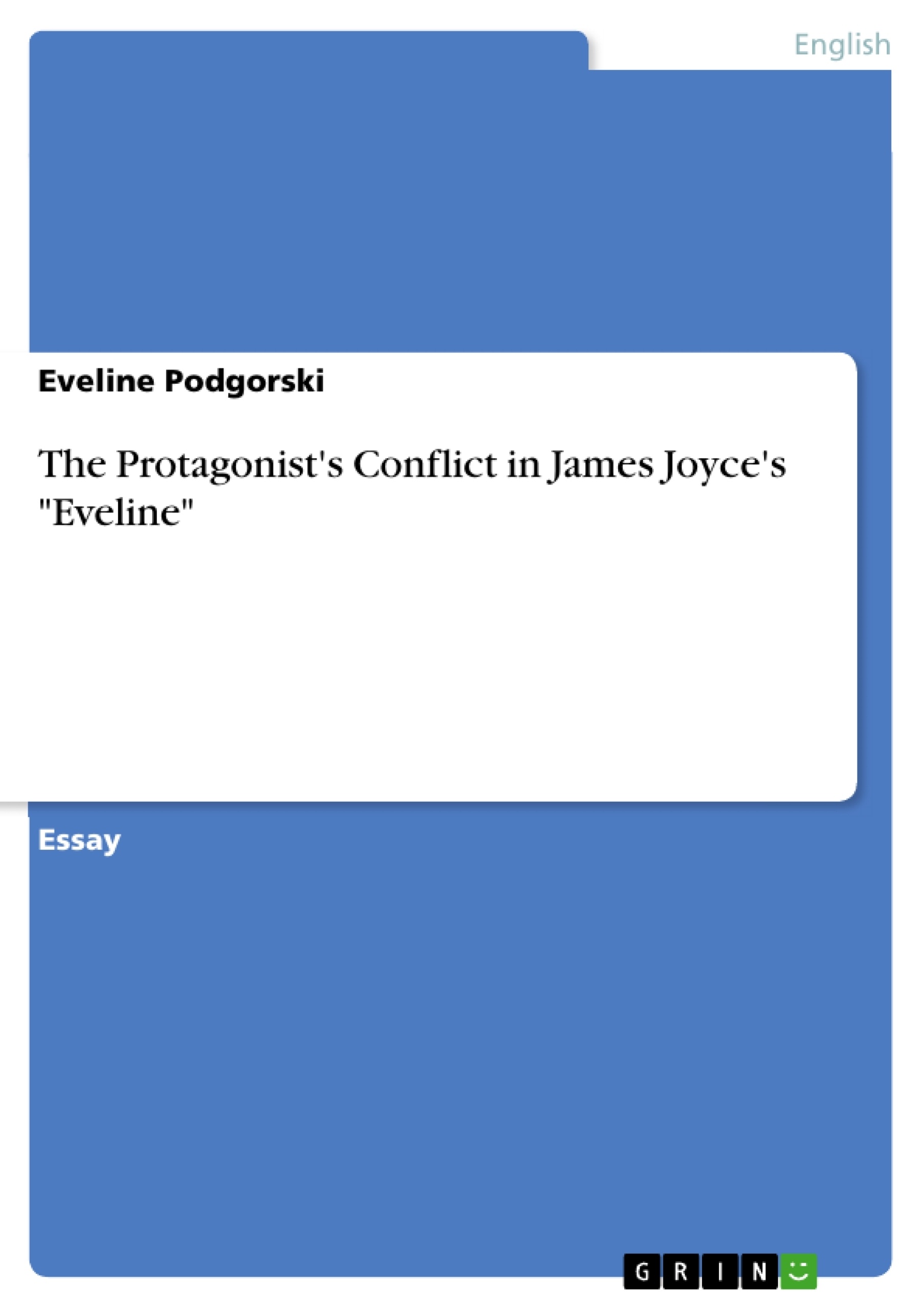In “Dubliners,” a collection of short stories published on June 15th 1914, James Joyce presents fifteen stories of different people belonging to the Catholic Middle-Class of 19th century Dublin. One of the characters is Eveline Hill, a young girl who is planning on leaving her home country Ireland. The paper gives a summary of the short story “Eveline” and goes on to analyze the conflict the main character Eveline Hill finds herself in. The circumstances that lead to her final decision not to leave her home are be discussed in greater detail.
Table of Contents
- Introduction
- Analysis of "Eveline"
Objectives and Key Themes
The objective of this paper is to provide an analysis of James Joyce's short story "Eveline" from his collection Dubliners. The analysis focuses on understanding the narrative techniques and thematic elements within the story.
- Paralysis and Inertia
- The Power of Memory and the Past
- Themes of Escape and Entrapment
- Eveline's Internal Conflict
Chapter Summaries
Introduction: This introductory section sets the stage for the in-depth analysis of James Joyce's "Eveline." It provides background information on the author, the short story's place within the larger collection Dubliners, and a brief overview of the themes that will be explored in the subsequent analysis. The introduction appropriately contextualizes "Eveline" as a representative work highlighting Joyce's distinctive writing style and thematic concerns within the framework of Dubliners. It positions the subsequent analysis within the broader context of Joycean scholarship, hinting at the interpretive richness of the text.
Analysis of "Eveline": This section delves into a detailed examination of "Eveline," dissecting the narrative structure, character development, and thematic resonance of the story. The analysis explores Eveline's internal conflict, the paralysis she experiences, and the compelling force of her memories. It examines the interplay between her desire for escape from a stifling domestic life and her simultaneous fear of the unknown, ultimately demonstrating how her past experiences and present circumstances shape her decision at the story's climax. Significant attention is given to the narrative technique, analyzing how Joyce uses stream-of-consciousness to depict Eveline's thoughts and feelings, highlighting her emotional turmoil and internal struggle. The analysis connects these elements to broader thematic concerns within Dubliners, such as the paralysis of Dublin life and the complex interplay between the past and the present. The section will unpack the evocative imagery and symbolism embedded in the story, showing how these elements contribute to its overall meaning and impact on the reader.
Keywords
James Joyce, Dubliners, Eveline, short story, paralysis, memory, escape, internal conflict, stream of consciousness, narrative technique, thematic analysis.
Frequently Asked Questions: Analysis of James Joyce's "Eveline"
What is the purpose of this document?
This document provides a comprehensive preview of an academic analysis of James Joyce's short story "Eveline" from his collection Dubliners. It includes a table of contents, objectives, key themes, chapter summaries, and keywords.
What are the key themes explored in the analysis of "Eveline"?
The analysis focuses on several key themes, including paralysis and inertia, the power of memory and the past, themes of escape and entrapment, and Eveline's internal conflict. These themes are explored within the context of James Joyce's writing style and the broader themes present in Dubliners.
What is covered in the "Introduction" section?
The introduction provides background information on James Joyce, the short story "Eveline," its place within Dubliners, and a brief overview of the themes to be analyzed. It contextualizes "Eveline" within Joycean scholarship and sets the stage for the in-depth analysis.
What does the "Analysis of 'Eveline'" section entail?
This section offers a detailed examination of "Eveline," dissecting its narrative structure, character development, and thematic resonance. It explores Eveline's internal conflict, her paralysis, the impact of her memories, and the interplay between her desire for escape and her fear of the unknown. The analysis also examines Joyce's use of stream-of-consciousness and the symbolism within the story to understand its overall meaning and impact.
What narrative techniques are analyzed in the document?
The analysis pays close attention to James Joyce's use of stream-of-consciousness to depict Eveline's thoughts and feelings, highlighting her emotional turmoil and internal struggle. The effectiveness of this technique in conveying Eveline's internal conflict is a major focus.
What are the keywords associated with this analysis?
The keywords include: James Joyce, Dubliners, Eveline, short story, paralysis, memory, escape, internal conflict, stream of consciousness, narrative technique, and thematic analysis.
What is the overall objective of the analysis?
The objective is to provide a thorough analysis of "Eveline," focusing on understanding the narrative techniques and thematic elements within the story, placing it within the context of Joyce's broader work and literary style.
- Quote paper
- Eveline Podgorski (Author), 2007, The Protagonist's Conflict in James Joyce's "Eveline", Munich, GRIN Verlag, https://www.grin.com/document/83869




